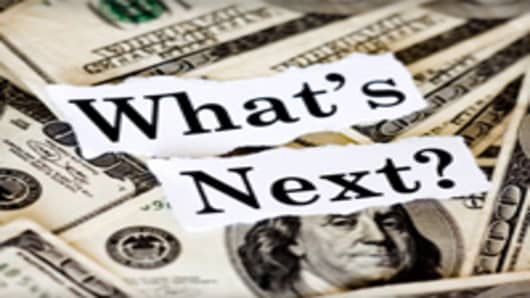It may be hard to believe, but the heretofore bumpy economic recovery is gaining momentum and is very likely to deliver a positive surprise in 2012.
Though it’s a still a contrarian view among economists, more are starting to profess optimism, abandoning the reflexive pessimism of recent years, when the economyoften disappointed.
”People are primed for what’s going to go wrong next,” says Chris Rupkey of Bank of Tokyo-Mitsubishi, who’s among the most optimistic. “Part of the problem is people think we’re not back to where we were before the crisis, so they downgrade their forecast," he says. "I think we’re working through this. There’s no pushing us off the recovery track.”
Such comparisons are both unrealistic and unwelcome, goes the thinking. For one, recoveries from financial crises are often long and difficult; secondly, some of the growth of previous two decades was driven by excess leverage and speculation.
For instance, few expect the auto sector to sell 17 million vehicles a year, as it did for most of the 1999-2006 period, anytime soon. Auto sales, however, have rebounded strongly from the depths of the recession, when just 10.6 million vehicles were sold, and are expected to remain an area of growth in 2012, surpassing a projected rate of some 14 million in 2011.
"We know there was a bubble; it absorbed a lot of resources," says Ram Bhagavatula of the hedge fund Combinatorics Capital.
Economists like Rupkey and Bhagavatula are forecasting GDP growth of at least 3 percent in 2012, well above the forecasts of the Federal Reserve (2.0-2.5 percent) and Wall Street consensus (2.0 percent).
Such optimism may seem somewhat fanciful given the current environment. On the international front, there is trouble in the Europe’s sovereign debt crisis and China’s economic slowdown. Meanwhile, the U.S. faces its own potential debt explosion, and a host of lingering question marks from jobs to housing to the consumer’s balance sheet.
“We’re still pretty cautious,” says IHS Global Insight’s Nigel Gault, echoing the common view. “We don’t have enough domestic strength to really take off, and at the same the rest of the world is decelerating and in some time going to into recession.”
It makes perfect sense then that the optimists say that fallout from Europe — and in a similar way, China — is less of a threat than widely perceived.
“People put a lot of stock in the financial market crisis and how it can bring down the real economy," says Rupkey. “It doesn’t always happen. After October ’87, it didn’t happen, “ he adds, referring to the global stock market crash.
List Of Positives
Though the optimistic camp is apt to play down potential negatives, it’s more likely to accentuate the positive forces behind an improving economy.
“There’s a lot of pent-up demand,” says Bhagavatula, who thinks growth could be as high as 4 percent. “People are starting to spend on the margins."
Rupkey, citing the Fed’s most recent flow of funds survey, says consumers are spending more as the debt load eases.
Household debt service payments as a percentage of disposable personal income hit a new 27-year low in the third quarter, and at 4.82 percent are more than 25 percent less than the 2004 peak.
Mortgage debt and consumer credit also continue to decrease from 2007 highs.
Consumer spending is showing signs of life.
Retails sales in November were 6.7 percent higher than a year ago.
The closely watched category of personal consumption expenditures, PCE, is up for the second year in a row after consecutive declinesin 2008 and 2009. What’s more, spending on services has been catching up to that of goods.
On the production front, exports in 2011 will almost certainly break the 2008 high of $1.842 trillion. The competitively valued dollar will continue to support growth, say economists.
Finally, the optimistic camp points to the critical job market. Even there, positives have been overlooked. The private sector has created 2.9 million jobs since the bottom of the labor market in February 2010, but some of those gains have been offset by a highly publicized reduction in the public sector payroll.
“The job market is improving slowly,” says Bhagavatula, who expects job growth to be stronger in 2012, averaging 180,000-200,000 a month, with the jobless rate “a touch under 8 percent.”
Weekly jobless claims recently fell to a 3 ½-year low, having been under the important 400,000-a-week level for some time now.
“Claims data suggest things may be picking up a little bit,” says Rupkey.
Such positive developments represent a beginning and need to be followed by improvement in other key areas, such as wages, confidence and housing, say economists.
Both housing and consumer sentiment have shown signs of life recently.
“Usually, spending drives production which drives income,” says Bhagavatula. “Activity comes first, confidence comes later. The longer we get away from the trough, the faster the growth rate should get."



